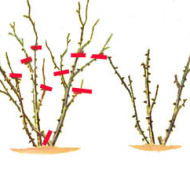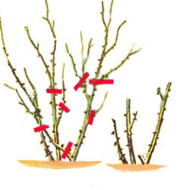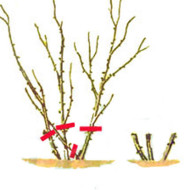How to plant and grow a spectacular floribunda Midsummer rose in the country
Content
- 1 The history and description of the Midsummer rose
- 2 Advantages and disadvantages of the variety
- 3 Video "Acquaintance with the Midsummer rose"
- 4 Step-by-step instructions for planting and care
- 5 Diseases and pests of the variety
- 6 Variants of using the Midsummer rose in landscape design
- 7 Gardeners reviews
The history and description of the Midsummer rose
In 2007, German breeders working at the Tantau nursery bred a new variety of roses - Midsummer. The plant belongs to the floribunda group, since it was obtained by crossing tea, polyanthus and muscat roses.
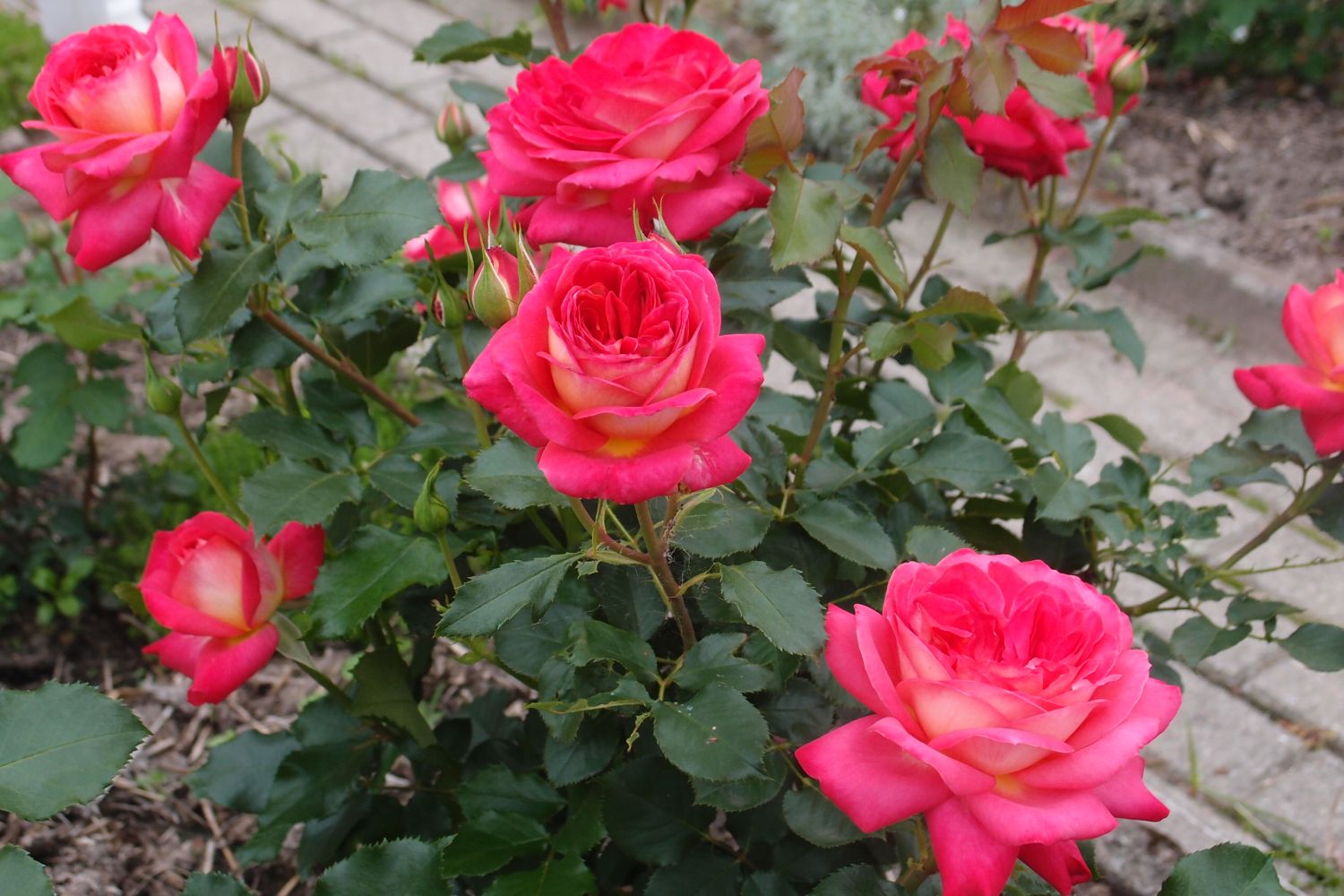
The Midsummer variety has high decorative qualities. The bush reaches a height of 90-110 cm. The crown diameter is about 50-70 cm. The plant is characterized by erect, slightly branched stems. The branches of the shrub are resilient and strong. The leaf plates are elongated, with notches at the edges. The petals are dark green in color, complemented by a characteristic matte sheen and waxy bloom.
The main decorativeness of the plant is revealed during the flowering period. The Midsummer variety blooms from June to October. It should be noted that the flowering is abundant and continuous. Large buds are collected in loose inflorescences. One inflorescence contains from 4 to 13 flowers. Terry-type buds are spherical or cup-shaped. The average number of petals in one flower is about 40. The diameter of the opened bud reaches 5–8 cm.
A distinctive feature of the Midsummer rose is its unique color. On the outside, the petals are painted in scarlet, crimson, pink or cherry shades, on the outside - in dark yellow and golden cream tones. Due to its unique color, the plant has a special charm and amazing tenderness. The aroma of the variety is light, unobtrusive, weakly expressed.
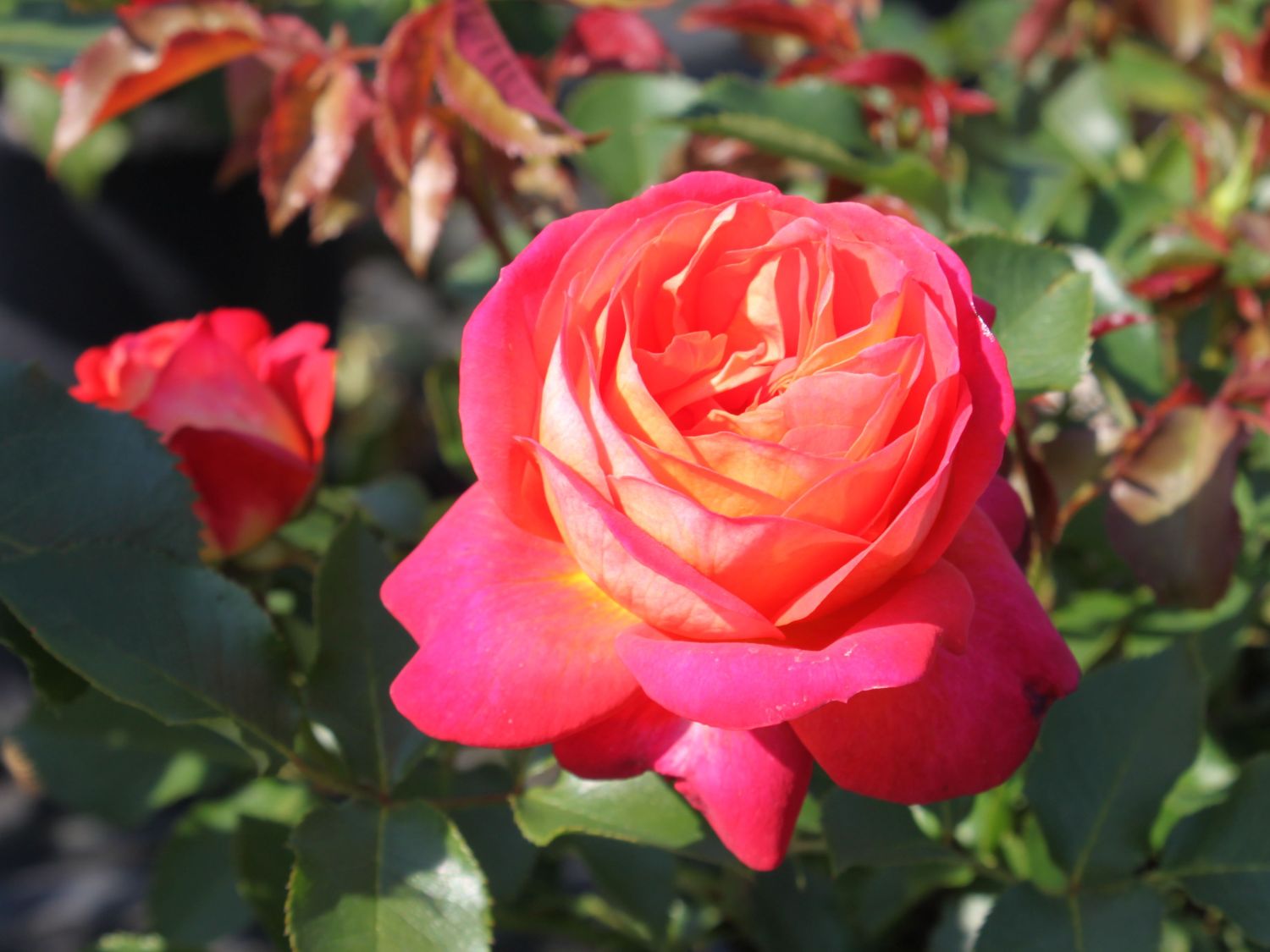
Advantages and disadvantages of the variety
Positive and negative qualities will help to compose a certain characteristic of the plant. What are the advantages and disadvantages of the Midsummer variety?
- the spectacular appearance of the bush;
- abundant and continuous flowering;
- a wide range of applications (gardening, landscape design, floristry);
- drought resistance;
- winter hardiness;
- disease resistance;
- unpretentiousness in growing;
- preservation of the decorative qualities of the cut buds.
- weak aroma;
- loss of decorativeness with abundant flowering, since the buds cover branches and leaves.
Video "Acquaintance with the Midsummer rose"
This video describes the varietal characteristics of an ornamental crop.
Step-by-step instructions for planting and care
When talking about roses, one immediately remembers the statement that this flower is considered one of the most capricious. But there are exceptions to everything. According to experienced gardeners, growing Midsummer floribunda does not require much time and effort.
Choosing a place on the site
Many people think that all roses love active sunlight.But, for example, an excess of ultraviolet radiation leads to burns on the leaf plates of a Midsummer rose. For growing an ornamental culture, a garden area with partial shade at lunchtime is suitable.

Soil requirements
The soil for Midsummer floribunda should be moderately heavy, but not too light. Clay, humus and turf soil are added to light sandy soil, which allows moisture to pass through like a sieve. Heavy clay soil is diluted with sifted river sand, compost, peat and humus.
Permissible acidity is from 5.5 to 6.5 pH. If the soil is too acidic, liming can be done. If it is necessary to increase the soil reaction, on the contrary, add manure or peat.
Planting and breeding methods
Midsummer is planted outdoors in spring or early fall. An autumn planting should be done a few weeks before the expected cold snap. Autumn planting is not suitable for all regions of Russia. So, for the northern regions, planting a seedling in the spring is preferable.
The rose is planted in a well-drained and nutrient-rich environment. To increase the survival rate, the root system of the seedling is dipped for several minutes in a solution of the growth biostimulator "Epin", "Zircon" or "Kornevin" prepared according to the instructions. If necessary, the bush is tied to a support. Further, the plant is abundantly mulched with peat, hay, straw.
The vegetative propagation method is rarely used. With seed reproduction, there is a high probability of loss of varietal qualities of the crop. It is customary to propagate Midsummer by grafting. How to reproduce a flower by grafting is shown in the diagram below:
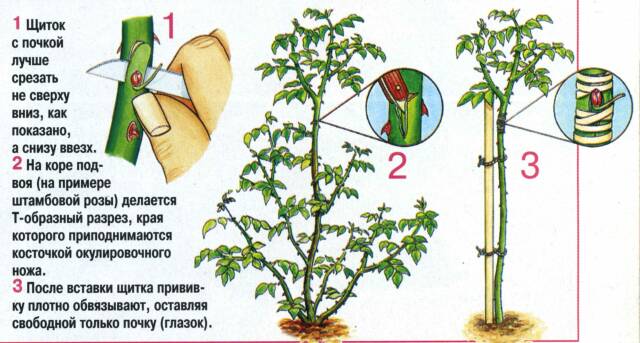
Watering and frequency of fertilizing
The frequency of watering the Midsummer rose depends on the weather conditions. If the weather is hot and dry, the plant is moistened at least twice a week. Under one bush, pour 15–20 liters of settled water at room temperature.
You need to feed the rose seasonally: nitrogen-containing substances are introduced in spring, potassium-phosphorus in summer and autumn. Mineral fertilizers alternate with organic ones. Before applying fertilizers, the soil is abundantly moistened - such a manipulation prevents burns of the rhizome.
Flower pruning
Shrub formation is carried out in the spring. The procedure must be performed before the start of the stage of active sap flow. Shoot pruning is performed with a disinfected pruner or a sharp knife. Formed on the branches "wounds" must be covered with garden pitch. Otherwise, the plant may become infected with infections.
There are three options for pruning roses: light, moderate, and strong. Light to moderate pruning is beneficial for flowering duration and intensity. Strong pruning helps rejuvenate the shrub.
- Weak pruning
- Moderate pruning
- Strong pruning
Preparing for winter
Despite the good winter hardiness, Midsummer needs to be covered for the winter. First, the shrubs are cut and spud with a mixture of peat and dry earth. When the temperature drops to -7 ° C or more, the plant is covered with agrofibre.
In the northern regions, the rose is covered with pine spruce branches, on top of which agrofibre is fixed.
Diseases and pests of the variety
Midsummer is immune to most fungal and bacterial infections. However, if the irrigation regime is not followed, the root system begins to rot. It is unlikely that it will be possible to save the plant, therefore it is better to avoid waterlogging of the soil in the trunk circle.
The main danger for ornamental shrubs is rose aphid, spider mite and scale insect. To prevent the appearance of pests, the crown is periodically sprayed with a solution of soapy water. When the water is dry, the leaves need to be rubbed.If the invasion of insects could not be avoided, treatments with insecticides "Aktara", "Iskra", "Aktellik" or "Fitoverm" are carried out.
Variants of using the Midsummer rose in landscape design
The spectacular Midsummer rose is actively used in landscape design. The plant looks interesting both in solitary and in group plantings. Floribunda roses are often combined with climbing varieties. Kultrura looks interesting against the background of conifers and cereals.
Midsummer is used to decorate garden paths, entrances, gazebos and open arbors. It can be used as a composite element of a mixed mixborder.

Gardeners reviews
“I have long wanted to plant a rose in the garden, but I was afraid of difficulties with growing. Last year I made up my mind and bought Midsummer and Midsummer Snow seedlings. Both plants quickly took root and overwintered successfully. So far, no problems have arisen with the cultivation. "
“I have been growing roses in my country house for many years. My favorite variety is Midsummer. A culture that is unpretentious in care, which pleases with abundant and long flowering. "
The Midsummer variety is a great solution for beginner gardeners who do not have hands-on experience in growing roses. With minimal care, the flower will thank you with intense flowering.

